
PRINCESS VITTORIA OF SAVOY, SCINTILLATING IN MICHAEL KORS COLLECTION, WAS THE STAR OF TATLER’S LITTLE BLACK BOOK PARTY Darren Gerrish
https://www.tatler.com/article/is-princess-vittoria-of-savoy-the-diamond-of-the-season
Napoleon Joseph Charles Paul of France, Pr Napoléon, married in Turin
in 1859, Princess Clothilde of Savoy daughter of Victor Emanuel. From
this union would come other Bonapartes with the name Victor. Prince
Napoléon Victor Jérôme Frédéric, Prince LOUIS Jérôme Victor Emmanuel
Léopold Marie, and, Prince Charles Marie Jérôme Victor
Was the Jacobite ‘Order of the White Rose’ somewhat successful
in their plan to put the Stuarts on a throne and rule the world?
There appears to contention with the Prussians who can claim the same
ancestry through the Winter Queen of Bohemia, Elizabeth Stuart,
daughter of King James, and thus the Hanovers who are in all regards,
the Windsors.
https://ancestors.familysearch.org/en/GVCL-NPH/louis-jerome-prince-napoleon-1914-1997
I Am Heir To Many Castles
Posted on June 12, 2023 by Royal Rosamond Press

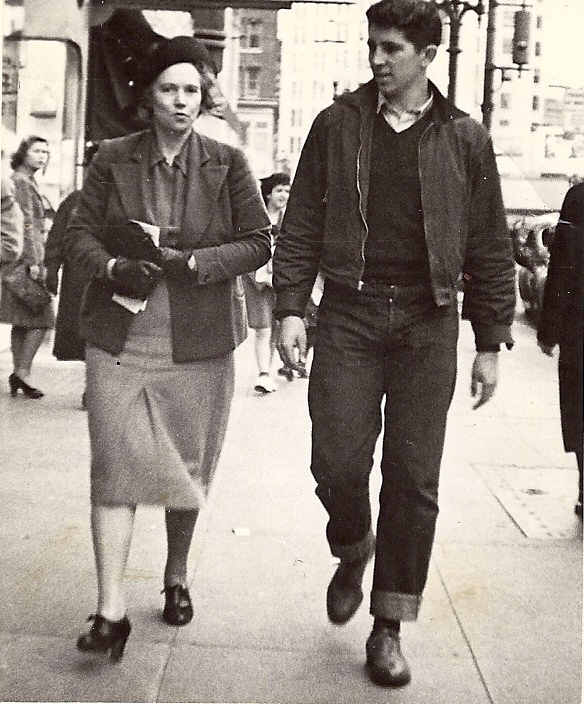
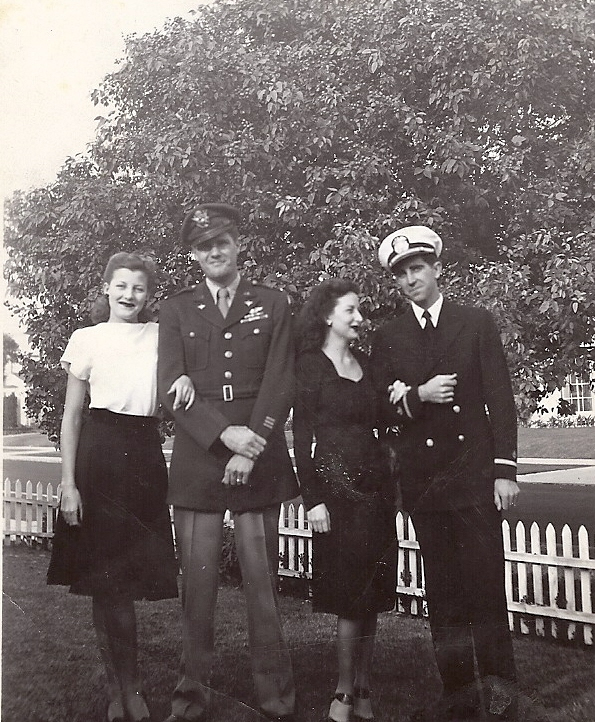
I am looking at thee Stuttmeisters descending from Sophia of Prussia. This post is a work in progress.
John Presco
Victor Emanuel “Felix” Stuttmeister from tree Bulkley Family Tree
| Birth | 20 Dec 1860 Berlin, Germany |
|---|---|
| Death | 10 Nov 1899 Roga, Mecklenburgische Seenplatte, Mecklenburg-Vorpommern, Germany |
| Father | Johannes “Hermann” Stuttmeister (1826-1890) |
|---|
| Mother | Henriette Theodore “Emma” Pöhlig (1834-1899) |
|---|
https://en.wikipedia.org/wiki/Sophia_of_Prussia
A member of the House of Hohenzollern and child of Frederick III, German Emperor, Sophia received a liberal and Anglophile education, under the supervision of her mother Victoria, Princess Royal.
Victoria, Princess Royal (Victoria Adelaide Mary Louisa;[1] 21 November 1840 – 5 August 1901) was German Empress and Queen of Prussia as the wife of German Emperor Frederick III. She was the eldest child of Queen Victoria of the United Kingdom and Prince Albert of Saxe-Coburg and Gotha, and was created Princess Royal in 1841. As the eldest child of Queen Victoria, she was briefly her heir, until the birth of her younger brother and future King, Edward VII. She was the mother of Wilhelm II, German Emperor.
https://en.wikipedia.org/wiki/Princess_Irene,_Duchess_of_Aosta
is Prince Aimone of Savoy-Aosta, 6th Duke of Aosta (Aimone Umberto Emanuele Filiberto Luigi Amedeo Elena Maria Fiorenzo di Savoia-Aosta; born 13 October 1967) is one of two claimants to be head of the House of Savoy. Since November 2019, he has served as the Ambassador of the Sovereign Military Order of Malta to Russia.[1][2]
Education and career[edit]
Aimone was born in Florence the second child and only son of Prince Amedeo of Savoy, Duke of Aosta and his first wife, Princess Claude of Orléans.[3] Aimone attended the Francesco Morosini Naval Military School and Bocconi University.[4][5] After he completed his education, Aimone worked at JPMorgan Chase in the United Kingdom. He also served a period in the Italian Navy’s special forces (see Comando Raggruppamento Subacquei e Incursori Teseo Tesei).[4]
Beginning in 2000, Aimone was the president of Pirelli operations in Russia.[4][6][7][8] Since 2012, he has also served as CEO of Pirelli Tyre’s Nordic division.[9] His contribution to deepening bilateral economic relations between Italy and Russia has been recognized by the authorities of both countries, by the appointment to the Order of Friendship of Russia and the Order of Merit of the Italian Republic.[10]
Marriage and children[edit]
Aimone’s engagement to Princess Olga of Greece, daughter of Prince Michael of Greece and Denmark, was announced in May 2005. Olga and Aimone are second cousins; both being great-grandchildren of the French pretender Prince Jean, Duke of Guise. They are also second cousins-once-removed, as George I of Greece is Olga’s patrilineal great-grandfather and Aimone’s great-great-grandfather. Several falsely reported wedding dates marked what was to become a three-year engagement.[11][12][13] The couple finally wed on 16 September 2008 at the Italian embassy in Moscow, the city in which Aimone is employed. Their religious marriage took place on 27 September 2008 at Patmos.[14][15][16][17]
Aimone and Olga have three children, two sons and one daughter:[4]
- Prince Umberto of Savoy-Aosta, born on 7 March 2009 in Neuilly-sur-Seine, France.[18][19] On 9 March 2009, Prince Umberto was granted the title Prince of Piedmont by his paternal grandfather. Upon his grandfather’s death he became heir apparent to the Dukedom.
- Prince Amedeo Michele of Savoy-Aosta, born on 24 May 2011 in Neuilly-sur-Seine, France. A day after his birth Amedeo was granted the title Duke of the Abruzzi by his paternal grandfather.[20]
- Princess Isabella Vita Marina of Savoy-Aosta, born on 14 December 2012 in Paris, France.[21][22] She was named in honor of Princess Isabelle of Orléans.
Dynastic issues[edit]
From his birth, Aimone was known as Duke of Apulia (duca delle Puglie).
On 7 July 2006, Aimone’s father, Prince Amedeo, Duke of Aosta, claimed the headship of the House of Savoy and the title Duke of Savoy, in opposition to his cousin Vittorio Emanuele, Prince of Naples.[6][23] Amedeo defined Aimone as Duke of Aosta “in pectore“.[24]
Young princess fights for her claim to the (abolished) throne of Italy
Vittoria di Savoia is the first female heir to the Italian crown in 1,000 years.
June 19, 2021, 9:19 AM
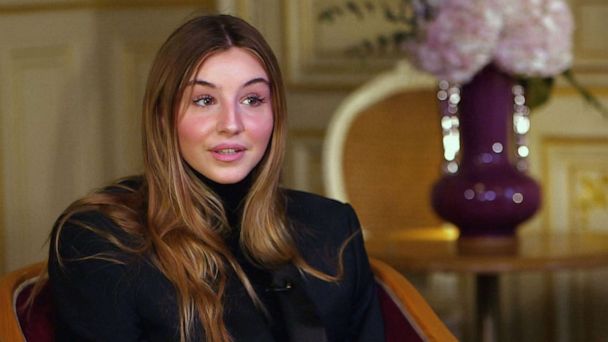
5:25
about:blank
Italian royals in exile spar over line of succession for abolished monarchy
ABC News’ Ines de la Cuetara speaks with the teenage heir to the exiled Italian royal family, which is divided ov…Read More
Italy may have abolished its monarchy 75 years ago, but having no real power hasn’t stopped its royal family from feuding.
Direct descendants of Italy’s last king are divided over who should lead the family. For thousands of years, only men in the family could rule. All that changed when the current head of the royal House of Savoy, Vittorio Emanuele di Savoia, issued a decree on his granddaughter’s 16th birthday granting her the power to eventually lead the family.
Princess Vittoria di Savoia — who is also a rising star on Instagram — is now the first woman in 1,000 years to become the family figurehead.MORE: Harry, Meghan deny report Queen Elizabeth not consulted over baby Lilibet’s name
“I think it’s a very important act, especially now in 2021 where women are standing so much for their rights,” she told ABC News in her first ever on-camera interview.
Vittoria’s father, Emanuele Filiberto, prince of Venice, said the move is a sign of the times.

Surely enough, Vittoria’s rise in royal ranks comes as more and more royal women across Europe are taking over their countries’ thrones.
“I think the next generation of royalties in Europe will mainly be women because if you look at Spain, if you look at Sweden, if you look at Norway, if you look at Belgium, England, well, we have a fantastic example with the Queen,” he said.
But, of course, there are those who oppose the young princess.MORE: Harry, Meghan deny claims they didn’t ask queen’s permission before naming daughter
In Russia, a separate branch of the family refuses to accept the new rules. Prince Aimone di Aosta, Vittoria’s distant cousin, declined ABC News’ request for comment, but told the New York Times Vittoria’s claim is “totally illegitimate.”
Vittoria’s father disagrees. He said the reason some don’t support Vittoria is because they wish they had her power.
“They were thinking without me having a male heir that finally it would come to them, but I think today times have changed, and we must stand with times and with modern times. So it’s normal that they’re not happy, and it’s very sad for them,” Emanuele said.
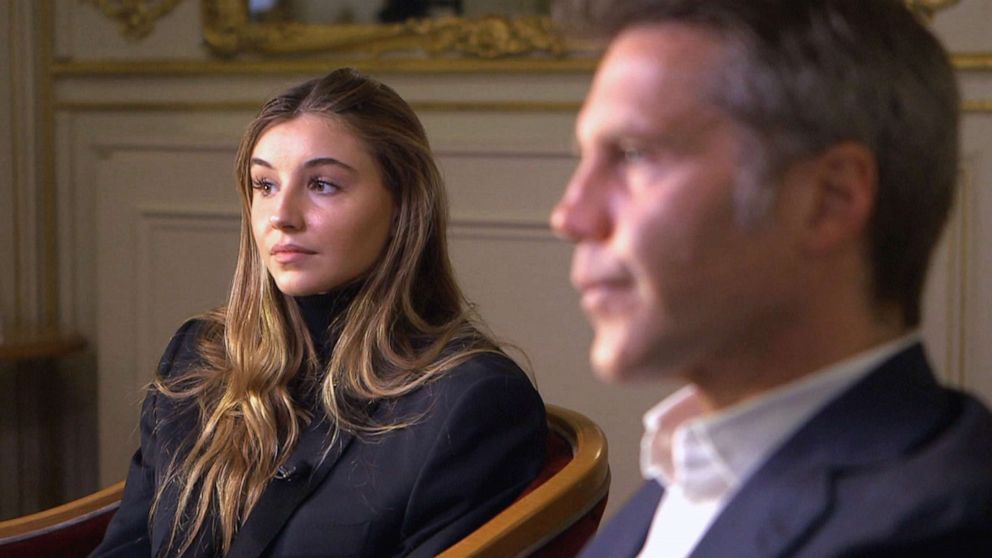
The Aostas are now contesting Vittoria’s claim through an age-old institution known as the Consulta dei Senatori del Regno, which Emanuele said was dissolved when the monarchy was abolished.
“Once my grandfather left Italy the Consulta died, so they recreated a fake Consulta with the same name to make believe,” Emanuele said.
The infighting between the Savoias and Aostas has gone on for decades, with Emanuele’s father even reportedly punching one of his cousins over the feud at the future king of Spain’s wedding.
“No, he did not punch him, he just gave him a nice, perhaps a bit too violent cuddle,” Emanuele joked.MORE: Prince Harry on royal family exit: ‘We chose to put our mental health 1st’
The irony, amid the royal drama, is that there’s no actual throne to fight over; Italy abolished its monarchy in 1946, with the last royals deemed too close to infamous dictator Benito Mussolini.
The Savoy family was eventually forced to go into exile, leaving behind their kingdom and numerous palaces built over the years by their ancestors. They were allowed to return to Italy in 2002, but Emanuele said the initial exile is further proof his side of the family is next in line to the (defunct) throne.
“We were in exile by the Italian Republic. We were the ones to go into exile because if monarchy were to come back, my father would have been king,” he said.

The family argues this fight is about much more than an imaginary crown, it’s about the family’s dynastic orders. Emanuele compared his royal family to a charitable organization and said they serve to promote Italy’s interests around the world.
“Everything I do, I do it for Italy,” he said.
Recent Stories from ABC News
https://imasdk.googleapis.com/js/core/bridge3.578.0_en.html#goog_1594762993
https://imasdk.googleapis.com/js/core/bridge3.578.0_en.html#goog_980872355
“The role of the monarchy is to have someone above politics. It’s like a flag. The queen or the king is a person that represents all the people of this country,” he said.
It’s why he thinks it’s a shame the duke and duchess of Sussex decided to step back from their duties as members of the British royal family.
“It’s not a red carpet, it’s not a movie scene, it’s real life, but another side I think she was prepared. She knew where she was going, so I personally think it’s sad to spit in the plate where you eat,” he said.
Speaking of Prince Harry and Meghan Markle’s exit from the monarchy, the prince of Venice said he believes the royal platform is too important to give up.
“Perhaps it’s difficult to understand in America, but when you come from a royal family you grow up with those titles, with those values, with those duties, and it’s part of you and to lose the titles, to lose what he (Prince Harry) was born to be — it’s extremely difficult. It’s a pity to give up,” said Emanuele. “They had so much to give to England, so much to do in England.”

Emanuele is now working on several documentaries on the House of Savoy, and is franchising his Italian restaurant in Los Angeles, “The Prince of Venice.”
As for Vittoria, she is now preparing to become the family figurehead. No princess lessons are involved, but she is spending time learning about her family history and getting to know Italy.
“I feel and I know that I have big responsibilities and I’m preparing myself for it,” she said. “We still have so much more to do and I’m very, very grateful and I will fight for this.”
Her father has pushed her to develop a good work ethic, which is why she recently interned at the Hotel Alfred Sommier, “cleaning the rooms and serving dinner at the restaurant,” according to Emanuele.
“It’s very important. It’s important to work. It’s important to realize that gaining money is difficult and you must be respectful,” he said.
Despite the controversy surrounding her position as a royal, Vittoria has no plans to relinquish her claim to the Aostas.
And while it currently doesn’t look like monarchy will make a true comeback in Italy, Emanuele said,
Sardinian Kingdom Founds SF Colony
Posted on April 27, 2016 by Royal Rosamond Press


Not only have I found Sleeping Beauty Rosa, I have found her Kingdom in San Francisco!
“After Victor Emmanuel became King of Sardinia he appointed Cipriani to be his first consul in San Francisco.”
Cipriani’s home was brought around the Cape by my kindred, Carl Janke, whose daughter married William Stuttmeister. I believe my kindred were chosen to help found the Sardinian Colony that would support Victor Emmanuel’s kingdom. This is astonishing! With the history of John Fremont and his wife, Jessie Benton, my kindred are the Acme of California History.
Many historians have wondered why the Italian Mafia was not present in California (with the exception of Big Bone Remmer) It appears the Sardinians own the franchise. Now I understand why, and how, my father, Victor William Presco, was a “made man”. The Stuttmeisters may be Italian-Germans. Here is William Stuttmeister and Cipriani.
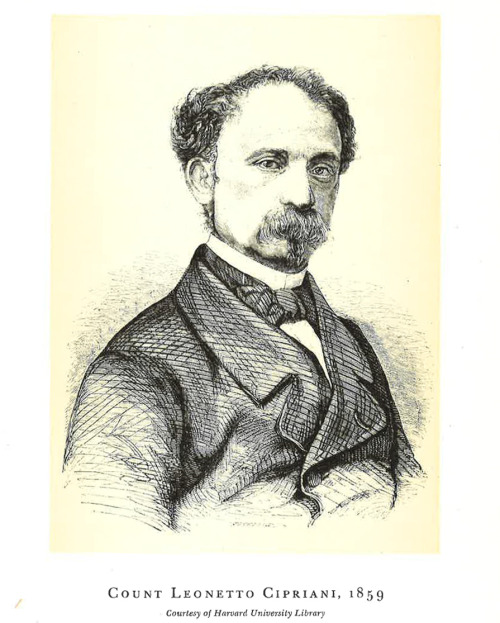
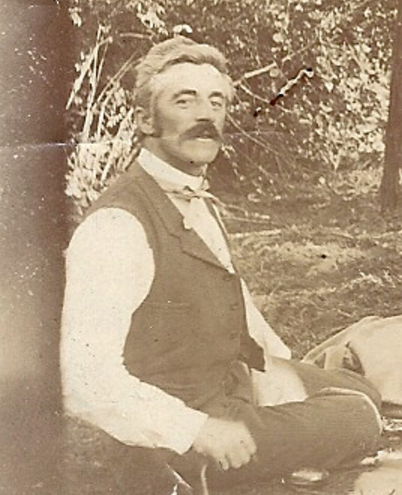


I declare myself the Cultural Embasador of the Kingdom of Sardinia. I will establish a cultural exchange between Sardinia and its California Colonly. I will make Sardinia the the Tourist Mecca for San Francisco natives. We will form a Art Exchange program based upon the works of Frederico Biesta, a owner of a SF newspaper. There will be a Festival Sardinia Day held in Belmont.
https://en.wikipedia.org/wiki/Kingdom_of_Sardinia
This is the history that Christine Rosamond Benton – a world famous artist – would want to read and be a part of. Instead,
Christine came to live with me at the Idle Hands Commune in San Francisco paid for by Betty Williams, who was married to Col. Zorthian, a Armenian who was titled ‘The Last Bohemian’. We knew the manufacturers of LSD that fueled the Kesey Revolution. Nancy Van Brasch lived with us. Jessie Benton was a good friend of Lewis Kossuth who lived with Giuseppe Mazzini in London. She and John had a bodyguard made up of Hungarian Forty-Eighters who also fought the Papal Army in Europe. Wenzel Anton Prescowitz was a Forty-Eighter from Bohemia. We are looking at the most radical people in the world that would form the Abolitionist Republican Party.
This is the Invisible Revolution that made California a Colony of the Kingdom of Sardinia that was surrounded by the Habsburgs who had backed the Papacy for a thousand years. This is why Count Cipriani drove a herd of cattle to California known for its fruit and vegetables. The Rose of the World Revolution would not be starved out. If Opus Dai had a mortal enemy, it was Victor Emanuel, and Belle Marie Rosa.
http://burlingameproperties.com/en/communities/belmont/carlmont
Click on top photo to enlarge. There is a gun hanging in the tree between my father;s grandfather, William Broderick, and his wife, Alice Stuttmeister, who looks like Christine and Vicki. We lived with Beema and Beepa in Oakland where these folks fled after the San Francisco after the earthquake. The gentleman holding the wine may be the father of William Broderick. There is no lineage for this branch who I suspect were the Illuminati, and sold barrels to bootleggers during Prohibition. Who do you think owns that rifle? How many Catholics fell in the sights of this weapon?
There is a black wreath hung in the tree next to the rifle. What message does that give?
https://en.wikipedia.org/wiki/Illuminati
http://www.britannica.com/topic/Carbonari
Then there are the Rougemont Knight Templars that owned the Shroud of Turin. They were the Dukes of Athens, and very possible my kindred on my mother Rosemary’s side. The Stuttmeisters were Teutonic Knights. President Obama sent more troops to fight ISIS from Germany.
https://en.wikipedia.org/wiki/Papal_States
To my loyal friends, Marilyn Reed, and Amy Sargent, history will honor you as Good Souls, who cared about my mental and physical health. Like I told my sixteen year old daughter after we met for the first time……
“All’s well, that ends well.”
Jon Presco
Copyright 2016
http://www.academia.edu/5778858/The_Italian_Colony_of_San_Francisco_during_the_Italian_Risorgimento



http://www.britannica.com/event/Risorgimento
After Napoleon’s defeat in 1815, the Italian states were restored to their former rulers. Under the domination of Austria, these states took on a conservative character. Secret societies such as the Carbonari opposed this development in the 1820s and ’30s. The first avowedly republican and national group was Young Italy, founded by Giuseppe Mazzini in 1831. This society, which represented the democratic aspect of the Risorgimento, hoped to educate the Italian people to a sense of their nationhood and to encourage the masses to rise against the existing reactionary regimes. Other groups, such as the Neo-Guelfs, envisioned an Italian confederation headed by the pope; still others favored unification under the house of Savoy, monarchs of the liberal northern Italian state of Piedmont-Sardinia.
https://en.wikipedia.org/wiki/Kingdom_of_Sardinia
Victor Amadeus initially resisted the exchange, and until 1723 continued to style himself King of Sicily rather than King of Sardinia. The state took the official title of Kingdom of Sardinia, Cyprus and Jerusalem, as the house of Savoy still claimed the thrones of Cyprus and Jerusalem, although both had long been under Ottoman rule.
Towards the Kingdom of Italy[edit]
On 17 March 1861, law no. 4671 of the Sardinian Parliament proclaimed the Kingdom of Italy, so ratifying the annexations of all other Apennine states, plus Sicily, to the Kingdom of Sardinia.[17] The institutions and laws of the Kingdom were quickly extended to all of Italy, abolishing the administrations of the other regions. Piedmont became the most dominant and wealthiest region in Italy and the capital of Piedmont, Turin, remained the Italian capital until 1865, when the capital was moved toFlorence. But many revolts exploded throughout the peninsula, especially in southern Italy, and on the island of Sicily, because of the perceived unfair treatment of the south by the Piedmontese ruling class. The House of Savoy ruled Italy until 1946 when Italy was declared a republic by referendum. In this referendum the southern regions, including Sardinia, voted overwhelmingly in favor of the House of Savoy, with the results being 63.8% in favor of maintaining the monarchy.
It appears that Cipriani was successful in uniting the House
of Savoy with the Bonapartes, and thus the House of Stuart. Prince
Napoleon Joseph Charles Paul of France, Pr Napoléon, married in Turin
in 1859, Princess Clothilde of Savoy daughter of Victor Emanuel. From
this union would come other Bonapartes with the name Victor. Prince
Napoléon Victor Jérôme Frédéric, Prince LOUIS Jérôme Victor Emmanuel
Léopold Marie, and, Prince Charles Marie Jérôme Victor
Was the Jacobite ‘Order of the White Rose’ somewhat successful
in their plan to put the Stuarts on a throne and rule the world?
There appears to contention with the Prussians who can claim the same
ancestry through the Winter Queen of Bohemia, Elizabeth Stuart,
daughter of King James, and thus the Hanovers who are in all regards,
the Windsors.
https://groups.yahoo.com/neo/groups/Jacobite/conversations/messages/4180
Before introducing the issue of the relationship between theColony and the central government, let us look into this type of political immigration which was characterised by different social implications and cultural backgrounds. In fact, one of these political immigrants was the young Leonetto Cipriani (1812-1888), destined to become the first Sardinian Consul of San Francisco. Assigned the tasks of improving trade between the Sardinian Kingdom and California,
’ in 1852, in quarters which he had physically brought from home. Curiously, the newborn Sardinian Consulate was constructed from 1200 pieces of wood, transported by sea and personally assembled by Cipriani and his entourage. Undoubtedly the official representative of the Sardinian Kingdom was welcomed with “interestand distinction” within a young Italian community which needed political support. Cipriani ’s activity in San Francisco essentially concerned the financial enhancement of the Colony, by improving maritime trade with the homeland. To this end the Consul enlisted the help of Nicola Larco and widely favoured him, funding the most lucrative initiatives of the Ligurian entrepreneur Cipriani was also a romantic: both his venturesome choice of emigrating to California and his early resignation can be traced to this inclination. In any case, more relevant than Cipriani’s impetuous nature is his list of citizens of the Kingdom, which he sent to Turin in 1853: this document is the first original report giving the names and activities of early Italian pioneers in California. Thanks to the list, we are introduced to a number of Italian residents in the West, including Larco and another personage who would later become historically significant: a certain Federico Biesta, vaguely and informally defined as a property owner Possibly even more interesting than the names included on the list is the exclusion of certain others. For instance, though his presence in San Francisco during the same period is well-established, the Sardinian Consul did not mention Felice Argenti, founder of the 1941 North American Chapter of the Giovine Italia. We now know that many others were also excluded from the list as well as Argenti: the new Consul, in fact, deliberately
http://sanfranciscoitaly.com/post/123993261859/meet-the-first-italian-consul-in-san-francisco
During the nineteenth century many prominent Italian travelers visited the Far West. One of the earliest visitors was Leonetto Cipriani (1812-1888). Cipriani was born in Corsica but his family roots (like those of Napoleon Bonaparte) were in Tuscany. After the Battle of Waterloo the family returned to Tuscany where it established a successful mercantile business. Cipriani was eventually appointed by Grand Duke Leopold II to be governor of Livorno and in that capacity established relations with King Carlo Alberto (King of Sardinia) and Louis Napoleon (President of France). – See more at: http://sanfranciscoitaly.com/post/123993261859/meet-the-first-italian-consul-in-san-francisco#sthash.e7UAQ3f2.dpuf





After Victor Emmanuel became King of Sardinia he appointed Cipriani to be his first consul in San Francisco. Cipriani’s memoirs, which contain narratives of three separate journeys to California in 1851, 1853 and 1871, were published in1934. He recorded some very interesting encounters. In fact, the accounts of his two earliest journeys are the only central overland narrative written by an Italian. Throughout his travels he encountered local leaders and diplomats as well as other Italians. In Salt Lake City he met Brigham Young and other members of the Mormon hierarchy, with whom he established good relations, as well as an Italian musician named Gennaro Capone. In San Francisco, he was introduced to the French and Austrian Consuls as well as Nicola Lauro who he described as “the richest Italian merchant in the city” and his cousin Ottavio Cipriani. He also describes how he assembled his elegant prefabricated home in Belmont, the first of consequence on the San Francisco peninsula, later to become the Ralston mansion.
His memoirs Avventure della mia vita (pictured above) were published more than forty-five years after his death and were based on a manuscript that is still located in Bastia, Corsica in the original sea chest that he used during his travels. These memoirs were first translated into English by Ernest Falbo and published as California and Overland Diaries of Count Leonetto Cipriani from 1853 through 1871 (Portland, OR: The Champoeg Press, 1962). More recently I had the honor to examine the Cipriani archives in Bastia, Corsica. I included excerpts from Cipriani’s account in my documentary history of European travelers (including other prominent Italians) who visited Utah entitled “On the Way to Somewhere Else” (Salt Lake City: University of Utah Press, 2010) which is still in prin
https://en.wikipedia.org/wiki/Papal_States
The Papal States were territories in the Italian Peninsula under the sovereign direct rule of the pope, from the 8th century until 1870. They were among the major states of Italy from roughly the 8th century until the Italian Peninsula was unified in 1861 by the Kingdom of Piedmont-Sardinia. At their zenith, they covered most of the modern Italian regions of Lazio (which includes Rome), Marche, Umbria and Romagna, and portions of Emilia. These holdings were considered to be a manifestation of the temporal power of the pope, as opposed to his ecclesiastical primacy. After 1861, the Papal States, reduced to Lazio, continued to exist until 1870. Between 1870 and 1929, the pope had no physical territory at all. Eventually Italian leader Benito Mussolini solved the crisis between modern Italy and the Vatican, and, in 1929, the Vatican City State was granted sovereignty.
- See more at: http://sanfranciscoitaly.com/post/123993261859/meet-the-first-italian-consul-in-san-francisco#sthash.e7UAQ3f2.dpuf
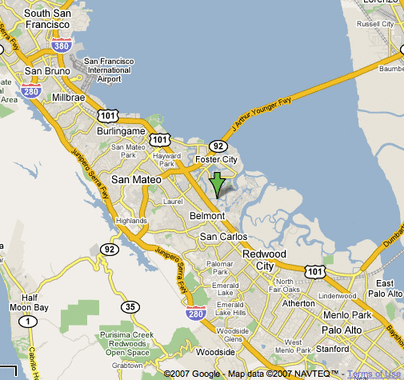


http://osdir.com/ml/culture.templar.history/2003-10/msg00001.html
Count Cipriani was born in Centuri Corsica, on October 10,
1812. On his father’s side he is descended from an old Florentine
family of Ghibellines, which after a long struggle with the vitorious
Guelfs, found refgue in Corsica in the fifteenth century. On his
mother’s side he is descended from Saint Francis Caracciolo of
Naples, and thus Saint Aquinas. This struggle inspired Shakespear to
write ‘Romeo and Juliet’ and thus the question “What is in a name?”
came to be.
Royal Rosamond Press dedicates this closure to my
chapter ‘Bohemians and Bankers’ to Cipriani, a man who shaped the
West, and knew the ancestor of Rosamond, the ‘Rose of the World.
John Presco
Copyright 2003
“Returning to Paris in October, 1855, he was warmly received
by his friend Prince Napoleon who overwhelmed him with questions
about his travels in America. “I answered them the best I could.”
Cipriani wrote, “But , it is a veritable deluge….We keep talking
about my journeys, of the Sanora, of conquering it.” Perhaps he
thought of seizing it for France and hoped the prince might persuade
his cousin the Emperor to finance the undertaking. “It is an idea in
the air,” he added, “that I would willingly undertake, if necessary
capital and men were available.”
To another member of the imperial household, Jerome
Bonaparte, ex-king of Westphalia, Cipriani revealed tha the had
considerable investments in California and hinted at receiving
interest of twelve to fifteen percent a month on his money. He also
boasted of his house in Belmont which “out there is considered
magnificent.”
On behalf of the Emperor Napoleon 3, he visited King Victor
Emanuel of Sardinia to explore the possibilities of a matrimonial
arrangement between the ruling houses as a prelude to a political-
military alliance between France and Sardinia. The conversation
eventually turned to Cipriani’s overland journey of 1853, which
apparently had not escaped the king’s notice. “I have heard tell,” he
said, “of a great journey of yours, with you on horseback and camping
out.”
“For eight solid months, Your Majesty,” Cipriani replied,
making certain to include the time he left San Francisco in February
to October, 1853.
“But it is true.” the king continued, “that you led covered
wagons and crossed the Rocky Mountains where there was roads, and
great rivers without any bridges.”
The above is from the ‘California and Overland Diaries of
Count Leonetto Cipriani’. a journey that may constitute the first
cattle drive. What this diary reveals is France’s plan to conquer
Mexico, and perhaps the Western United States.
“Cipriani must have followed with close interest the
activities of Count Raousset-Boulbon and other French filibusters in
the Sonora province of Mexico. The French consul in San Francisco, in
difficulty with the American government for his alleged support of
such filibustering activity, wrote to the Sardinian Ministry of
Foreign Affairs in 1854 that he was grateful (moral) support he was
receiving from Colonel Cipriani. That Cirpiani had entertained some
such expedition in the Sonora is clear from his memoirs though there
is no evidence of any actual participation.”
https://books.google.com/books?id=ESusAAAAIAAJ&pg=PA213&lpg=PA213&dq=frederico+biesta+cerruti&source=bl&ots=yMSEfYTxVz&sig=e2EUDGXoyaBRpHftjQRoFAGpUzk&hl=en&sa=X&ved=0ahUKEwiqvbWyxq_MAhWHKGMKHdfKBIYQ6AEILDAE#v=onepage&q=frederico%20biesta%20cerruti&f=false
With the ‘Gold Rush’ came foreigners who sought to fulfill
the manifest destiny of their nations who now feared the growing
richness and power of America and the role she might play on the
world stage. One could say pre-emptive strikes were made against
the “boastful barbarians” as Count Cipriani titled most of the
Americans he encountered. Without a doubt he followed with interest
the moves of Count Gaston Raousset-Boulbon, who arrived in San
Francisco on August 22, 1850, just at moment US laws segregated the
foreign people who came to search for California riches. His arrival
coincided with the move of thousands of French-people who looked for
a way out of the wars in their country, who came to find substance
and well-being in California. Not finding any gold, Raousett wondered
if California’s gold extended into the Mexican State of Sonora. I am
sure Ciprinai wondered this as well, and he may have organized his
cattle drive for such an expedition, he selling some California
property to the Rothschilds to bank-roll his adventure that the
Bonapartes were well aware of.
Raousset-Boulbon made his first trip to Mexico in February
1852. Once in Mexico City, he met Consul André Levasseur who
introduced him to investors of a company called La Restauradora whose
majority partner was Jecker, Torre and Co. On April 7, 1852, Raousset-
Boulbon singed a contract with La Restauradora on which he is
appointed jointly with an “agent”, who he met in San Francisco, to
explore all places in northern Sonora, and discover gold mines..
The Count returned to San Francisco, and recruited a company
of about 270 men, in addition to weapons and food. On May 19, 1852,
he left San Francisco, on the Archival Gracie to arrive Guaymas,
Sonora, the first day of July, under a spectacular welcome provided
by the Guaymas people and Sonora authorities. But in no time it was
clear he was a rebel. Raousset-Boulbon granted the company with a
flag with the French colors and the words “Indepéndance de Sonora”.
On October 1852, General Navarro and Blanco faced Roausset
near Hermosillo. The treaty with the French company was dissolved,
but Blanco guaranteed the security of the French. Raousset-Boulbon,
who had hidden in Guaymas, and did not sign the treaty. The project
in ruin, the French nobleman returned to San Francisco where he
consolidated his mission in Sonora:
Becoming rich with the supposed Sonora gold
Putting a stop to the US expansionism.
Reestablish the pure Latin-blood on the Americas.
Taking revenge on Mariano Arista.
Back in Mexico, Arista was deposed and replaced by Juan
Bautista Ceballos as the presidency, then by Manuel María Lombardini,
who in turn was succeeded by Santa Anna, and Gandsen, US minister to
Mexico. Raousset-Boulbon departed from San Francisco on June 16,
1853, arriving in Mexico City on July 7. He met Santa Anna and
discused with him his colonization project in Sonora by bringing
6,000 emigrants from Upper California from Europe in six years. Santa
Anna refused the proposals and Raousset-Boulbon’s forces were finally
defeated by General José María Yáñez on July 13, 1854. He is shot
dead on August 12, 1854.
Around 1860 a group of rich Mexican emigrants met in Europe,
they had fled the Juarez revolution. Catholic and conservative, they
looked for support in Europe for their plan to establish a monarchy
in Mexico. They needed money, troops and a genuine European noble.
The Bonapartes had tried to bestow nobility upon Cipriani, but he
refused fearing to become more of a puppet then he was. Victor
Emanuel had made him Governor of Balogna, and he would become the
first President of the United Kingdom of Italy. Cipriani would marry
an American, Mary Tolly Worhtington of Baltimore County who a
descendant of George Washington. Cipriani descends from the famous
Caracciolo family of Naples, and appears to be the son of Napoeleon’s
major dommo, Franchesci Cipriani. The whole truth is not being told
here, and Cipriani may have been playing down the royal hand he was
dealt.
https://en.wikipedia.org/wiki/Federico_Cerruti
Jerome Bonaparte married Elizabeth Patterson, and wealthy
heiress. Emperor Napoleon had marred Marie-Louis von Habsburg, and it
was a Habsburg that be amply qualified to become the first Emperor of
Mexico. Napoleon III. gave the emigrants troops, French financial
circles assured their assistance. The French supported the
conservatives in the civil war with the radicals and occupied the
capital. They planned an expansion of France on the American
continent close to the United States of America, torn up by the civil
war. Maximilian supported aspect of the Confederacy, it said he
financing Quantril. After the Civil War many Confederate officers and
politicians found sanctuary in Mexico.
The brother of the emperor Franz Josef, archduke Ferdinand
Max, seemed to be a suitable candidate. He was married to the Belgian
princess Charlotte. As commander of the Austrian navy and governor
general of Milan, he could not live all his ideas. Poet, lover of
large gestures, an emperor throne was enticing for him. In addition
he was honestly convinced to be able to bring law and peace to Mexico.
In 1863, pushed by Napoleon III., the ambitious Maximilian
and its wife Charlotte, fulfilled by romantic ideas, are proclaimed
emperor of Mexico. Charlotte saw herself as co-emperor, perhaps even
as the actual emperor, requesting her husband to finally show his
qualities – in Mexico. Perhaps she wanted also to flee the bores the
Miramar castle and the shades of the more beautiful empress Elisabeth.
The Austrian court was suspicious about this adventure,
Maximilian had to resign any rights of succession to the Austrian
throne. An Austrian volunteer corps followed him. Their uniforms
aroused the mockery of the Mexican children. On the trip the couple
prepared for their new job: How to behave at the audience, how to
place guests at diner, which medals to be given, what uniforms the
guards should wear.
But the emperor found only few followers and an indebted
government. The Mexican empire remained limited to a considerable
number of generals, ministers, chamberlains, stable masters, cooks,
gardeners and palace guards, plus some land owners and businessmen,
who profited from the emperor. Maximilian, a Sombrero on his head,
traveled around the country, gave dinners and distributed medals. He
adopted a small Mexican boy as his son, his mother reclaimed him back
later. This was a gesture my father would imitate as he loved history
and admired the Habsburgs.
The republicans became stronger and advanced. Vienna stood
briefly before the 1866 war against Prussia and Italy, and permitted
only a limited recruitment of volunteers. But they sent from the
imperial collections the shield of Montezuma and the report by Cortez
to Karl V., how he had won victory against the Aztecs.
The USA supported the opponents of the emperor, conforming to
the Monroe doctrine “America the Americans”. They demanded and
obtained that the recruitment of volunteers in Austria was stopped,
2000 men already embarked had to leave their ships. With the victory
of the north in the American civil war 1865 the decision fell also in
Mexico. In vain, empress Charlotte searched assistance. She arrived
in Europe after the battle of Königgrätz. In Paris, which had an
assistance contract with Mexico, she got the answer from Napoleon
III., “it would be good, if her majesty would not hang on to
illusions”.
Napoleon did not want to invest money into an affair without
future. She did not even bother to go to Vienna. Franz Josef did not
want to hear anything of its brother, specially not since the
Viennese rallied after the lost war against Prussia “Vivat emperor
Maximilian”, who seemed to them as more liberal and the better
emperor for Austria. Her last hope was the Pope, who could have
talked to Napoleon and Franz Josef, concluded a concordat with Mexico
and convinced the Mexican catholic church. But Pius IX. only wanted
to pray. Charlotte fell into depression, one night fled from the
hotel and required lodging in the Vatican. Her brother brought the
mentally ill Empress back to Miramar.
The French troops withdrew. Maximilian was on the way back to
Austria, however his Belgian and Austrian advisor’s, specifically
father Fischer convinced him not to give up the throne. Even his
mother now requested from him to endure as long this “can happen with
honor “. His wife had written in a memorandum before her departure
that “abdication is condemning himself, an certification of
inability, acceptable for the old and stupid, but not for a prince of
34 years full of live and future.”
But his armed forces were small and little motivated. On May
15th, 1867 Maximilian handed his sword to the partisan leader
Escobedo. He was taken prisoner. He could have fled, but he had
refused to leave his most devoted officers. He was condemned to
death. In the prison he complained briefly before his execution, that
he was here because he had followed his wife.
Now the diplomacy got into motion to prevent that a member of
the ruling European dynasty would be shot like a simple murderer.
Franz Joseph restored Maximilian’s rights to the succession of the
Austrian throne and asked the American secretary of state to
intervene.
On June 19th, 1867 Maximilian was executed on the Cerro de
las Campanas, a hill near the city Queretaro together with the
generals Miguel de Miramon and Thomas Mejia – latter an Indian –
scarcely 350 years after the murder of Montezuma by Spanish
mercenaries. Maximilian gave a golden piece of twenty pesos to each
soldier of the firing squad.
He was idealist, a human full of liberal thoughts and had
honestly hoped to bring the Mexican people liberty and internal
peace, “a figure of beautiful, pure knighthood, which will teach up-
striving souls that it there is something higher than the bare life
and benefit” wrote Adalbert Stifter.
He was idealist, a human full of liberal thoughts and had
honestly hoped to bring the Mexican people liberty and internal
peace, “a figure of beautiful, pure knighthood, which will teach up-
striving souls that it there is something higher than the bare life
and benefit” wrote Adalbert Stifter.
It appears that Cipriani was successful in uniting the House
of Savoy with the Bonapartes, and thus the House of Stuart. Prince
Napoleon Joseph Charles Paul of France, Pr Napoléon, married in Turin
in 1859, Princess Clothilde of Savoy daughter of Victor Emanuel. From
this union would come other Bonapartes with the name Victor. Prince
Napoléon Victor Jérôme Frédéric, Prince LOUIS Jérôme Victor Emmanuel
Léopold Marie, and, Prince Charles Marie Jérôme Victor
Was the Jacobite ‘Order of the White Rose’ somewhat successful
in their plan to put the Stuarts on a throne and rule the world?
There appears to contention with the Prussians who can claim the same
ancestry through the Winter Queen of Bohemia, Elizabeth Stuart,
daughter of King James, and thus the Hanovers who are in all regards,
the Windsors.
https://groups.yahoo.com/neo/groups/Jacobite/conversations/messages/4180
Did the Jacobite movement come to America? I am authoring a
biography of my family, and came upon Count Leonetto Cipriani who
became the President of Italy.
Jon
“On behalf of the Emperor Napoleon 3, he visited King Victor
Emanuel of Sardinia to explore the possibilities of a matrimonial
arrangement between the ruling houses as a prelude to a political-
military alliance between France and Sardinia.”
“It appears that Cipriani was successful in uniting the House
of Savoy with the Bonapartes, and thus the House of Stuart.”
Anarchists, Jacobites, Masons & Manifest Destiny
The City of Belmont
California was founded by Count Cipriani who appears to be related to
the Anarchists of Italy, who may have had something to do with
Sissi’s assasination. Anarchists Clubs sprang up in Italy in response
to the Hapsburg’s and Austria coming to rule Italy. Opposed by the
Piedmontese and the Milanese, Count Leonetto Cipriani would champion
the cause of a free and democratic Italy.
“A writer hostile to Cipriani accused him of forbidding his
son Italian citizenship because he did not want the boy to be a
subject of an Italy that, after 1882, was allied with the traditional
enemy, Hapsburg Austria. Cipriani seldom forgave and never forgot an
enemy.”
Whether Leonetto Cipriani is related to the infamous Italian
Anarchist, Amilcare Cipriani, I do not know. But, they surely had the
same cause, that would come to shape the culture of San Francisco, if
not the whole Pacific Coast, and not just the Italian community. It
appears that Cipriani was successful in uniting the House
of Savoy with the Bonapartes, and thus the House of Stuart. Prince
Napoleon Joseph Charles Paul of France, Pr Napoléon, married in Turin
in 1859, Princess Clothilde of Savoy daughter of Victor Emanuel. From
this union would come other Bonapartes with the name Victor. Prince
Napoléon Victor Jérôme Frédéric, Prince LOUIS Jérôme Victor Emmanuel
Léopold Marie, and, Prince Charles Marie Jérôme Victor
Was the Jacobite ‘Order of the White Rose’ somewhat successful
in their plan to put the Stuarts on a throne and rule the world?
There appears to contention with the Prussians who can claim the same
ancestry through the Winter Queen of Bohemia, Elizabeth Stuart,
daughter of King James, and thus the Hanovers who are in all regards,
the Windsors.
Count Cipriani was born in Centuri Corsica, on October 10,
1812. On his father’s side he is descended from an old Florentine
family of Ghibellines, which after a long struggle with the vitorious
Guelfs, found refuge in Corsica in the fifteenth century. On his
mother’s side he is descended from Saint Francis Caracciolo of
Naples, and thus Saint Aquinas. This struggle inspired Shakespear to
write ‘Romeo and Juliet’ and thus the question “What is in a name?”
came to be.
“Returning to Paris in October, 1855, he was warmly received
by his friend Prince Napoleon who overwhelmed him with questions
about his travels in America. “I answered them the best I could.”
Cipriani wrote, “But , it is a veritable deluge….We keep talking
about my journeys, of the Sanora, of conquering it.” Perhaps he
thought of seizing it for France and hoped the prince might persuade
his cousin the Emperor to finance the undertaking. “It is an idea in
the air,” he added, “that I would willingly undertake, if necessary
capital and men were available.”
To another member of the imperial household, Jerome
Bonaparte, ex-king of Westphalia, Cipriani revealed tha the had
considerable investments in California and hinted at receiving
interest of twelve to fifteen percent a month on his money. He also
boasted of his house in Belmont which “out there is considered
magnificent.”
On behalf of the Emperor Napoleon 3, he visited King Victor
Emanuel of Sardinia to explore the possibilities of a matrimonial
arrangement between the ruling houses as a prelude to a political-
military alliance between France and Sardinia. The conversation
eventually turned to Cipriani’s overland journey of 1853, which
apparently had not escaped the king’s notice. “I have heard tell,” he
said, “of a great journey of yours, with you on horseback and camping
out.”
“For eight solid months, Your Majesty,” Cipriani replied,
making certain to include the time he left San Francisco in February
to October, 1853.
“But it is true.” the king continued, “that you led covered
wagons and crossed the Rocky Mountains where there was roads, and
great rivers without any bridges.”
The above is from the ‘California and Overland Diaries of
Count Leonetto Cipriani’. a journey that may constitute the first
cattle drive. What this diary reveals is France’s plan to conquer
Mexico, and perhaps the Western United States.
“Cipriani must have followed with close interest the
activities of Count Raousset-Boulbon and other French filibusters in
the Sonora province of Mexico. The French consul in San Francisco, in
difficulty with the American government for his alleged support of
such filibustering activity, wrote to the Sardinian Ministry of
Foreign Affairs in 1854 that he was grateful (moral) support he was
receiving from Colonel Cipriani. That Cirpiani had entertained some
such expedition in the Sonora is clear from his memoirs though there
is no evidence of any actual participation.”
http://www.jstor.org/stable/25155579?seq=1#page_scan_tab_contents
In 1851 he brought to Belmont a prefabricated house in 1,200 parts,
to be fastened together with 700 hooks and 26,000 screws. He invested
in local realestate but lacked the Midas touch. The Count sold his
prefab house and sailed back east to organize a wagon train to move
overland to the Pacific. In 1853 the Count left Missouri with 11
wagons, 24 hired hands, 500 cattle, 600 cattle, 60 horses, and 40
mules. He wrote an account of this six-month journey that became the
book ‘The California and Overland Diaries of Count Leonetto Cipriani’
by Ernest Falbo.
But, I have just touched the surface, for it appears Count Cipriani
was a relative of Napoleon’s’s major donmo, Franchisci Cipriani who
was a fellow Tuscan, whose family knew the Bonapartes well, and were
with him in the end, in the emperor’s exile on St. Helena. What is
truly extraordinary, is, there have recently appeared several books,
and a couple of television documentary in Europe suggesting it is the
body of Franchesci Cipriani who was found in the coffin of Napoleon
when it was exhumed and moved from England to France. You will hear
more about this as this genealogical tale, and mystery, unfolds.
Count Cipriani would make seven more voyages to the United States,
dabbling in mining, ranching, and the stock market. When Cipriani was
called home to serve in the Italian Senate in 1853, he turned over
his consular duties to a most unlikely Italian, Patrice Guillaume
Dillon, the French consul with the Irish last name. Dillon was
responsible for all matters concerning all the Italians in the Far
West. Since he could not read or write Italian, Dillon employed a
friend of Cipriani’s, Frederico Biesta. Biesta would eventually serve
as acting consul for Sardinia within the French Consulate. What is
going on here?
Biesta was born in Turin, the home of the Holy Shroud, and served in
the Army of King Charles Albert of Sardinia with considerable
distinction. He was made a cavalier. After six months he had to turn
to his friend Cipriani for financial help, and because of his many
talents, Cipriani became his backer. When the French government
reassigned Dillon to Port au Prince in 1857, Biesta became acting
consul of Sardinia. Everyone expected him to be named permanently,
but to everyone’s dismay he was passed over, and a native of London,
Benjamin Davidson got the post.
Davidson owed his selection to the fact he was the local agent of the
Rothschild banking house of London. Count Cavour’s of Sardinia
policies were commonly said to be financed by loans from the
Rothschilds. European Bankers were eager to have their agents in
consulates where thy could be on the lookout for financial
opportunities. Napoleon had his agents all over thw world and was
forever at war with Jacob Rothschild
Members of the emporers family were said to be Freemasons. I suspect
Dillon was a Mason, as was Bret Harte, the Californian writer and
poet who was the discovery of Jesse Benton Fremont, the wife of the
founder of the Republican Party, and its first Presidential
candidate, John Fremont who was titled ‘The Trail Blazer’, he a
Pioneer of the West. Jesse Benton is an ancestor of my niece Drew
Benton, whose father, Garth Benton, married my late siser, the world
renowned artist who signed he art by her middle name, Rosamond, which
is my mother Rosemary’s maiden This name hails from Rougemont
Switzerland.
Ralston’s’ death by drowning in San Francisco Bay while taking his
usual swim, has been titled a murder by some, it said his demise
coming at the hands of the agents for Rothschild Banking. William
Sharon would come to own the chateau of Cipriani, and beget a
powerful family of politicians and bankers, including the founder of
Welles Fargo. These bankers are related to the famous Preston family
who are kin to the Benton family, and thus my niece.
When Ralston needed silver and gold bullion to back up his bank notes
and stop a run on his, and other Sand Francisco banks, he had a un-
named person let him into the San Fransisco Mint, and in the middle
of the night they carried a couple of tons of bullion through the
streets. In the morning, Ralston showed the people the large pile of
gold and silver stacked-up in his bank. I believe this person who
worked in the Mint was Bret Harte, as it was Jesse Benton who got him
the job at the mint, where was minted the first U.S. coin where on is
printed these words “In God We Trust”. Some believe this motto is of
Masonic origin.
https://groups.yahoo.com/neo/groups/ctrl/conversations/messages/68104
FEDERICO BIESTA.
A Veteran Italian Editor Passes Away. He Died With His Pen in His Hand While at Work Translating Telegrams. The veteran Italian editor, soldier and diplomat. Fedeilco Kle>ta, died in his apartments on Mdtitgouieiy street at 7 o’clock yesterday morning. He passeci away quiellyiwith lits pen in his hand, and seemed as If he was going to sleep, so peaceful was the end.
i-‘ederico Uiesta was one of the best- known Kalians in California, tie was looked upon by bis own people as a man of high Intellectual attainments, and was respected by them. Somewhat irritable in disposition, but most reserved Iv manner, he counted his intimate friends only by hundreds, but ihose that he had loved him and appieciaied his intellectual aitainnients. At the tune of his death he was trausl.tlne telegrams lor the Ittliau paper L’Elvezia, and woiKed up to the lait moment, and ouiv stopped wiiting to die. lie had been sick for some time w itn a torm of anaemia, hut his deaib was unexpected by any
atiacue of the Italian consulate, m which he tilled me position of secretary naUl 1857, when lie went to British Columbia ana engaged iv tne business of assayer. He only remained at It for a few yeais and returnrd to California, agaiu taking a position In i he Italian consulate. From that time on lie rilled various offices of bis Government until 1881, when he went Into journalism eniliely. Ha started the tii>t Italian paper in California, called LEctio della l’atn.i, and was also editoi of the illustrated l ■au i r, La Patria, ISefote coming to this country Federico Biesia was in the Italian army under Klnc diaries Albert, aud In the revolution of 1849 gained
considerable distinction in the service. At the battle of Novarra he was ihe l’«;irer of the mi I’oitani dispatches from the King to bis son. Yicioi Emanuel. For his .ictiou ou that occasion he was made a chevalier. The life of lederico Diesta was filled with work, and he passed away knowing, he had done every duty sei him.
Victor William Presco made several expiditions across the border
and was good friends and partners with Americans who have been titled
the “Mexican Mafia”. He smuggled Connie, his Mexican bride to be,
over the border in a marijuana shipment, and it was his desire to
make Connie’s eleven children his heirs, which he did, much to the
consternation of Vicki who saw this a more grandstanding from a man
who commanded attention everytime he walked into a room, and got it;
for Victor was a Leo, a Lion-King in his own mind, and was forever
conducting loyalty checks.
I know he heard things from his mother. His cousin Bill was
hoisted atop a great wall in Belmont at ten, and told to go get his
stolen legacy. But, when one has lost a fortune, or a title, one
quickly learns to not talk about it, as one can be
titled “delusional” – especially when one has nothing to show for
their royal adventures and contacts with the high and mighty.
Vic was present when his daughter presented her portrait of
Jimmy Stuart to the actor my father was mistaken for when he and
Rosemary came out of a theater in Westwood, Vic just out of the
Merchant Marines. This was the only male she rendered because of the
striking resemblance. I do not know if Jimmy is a Stuart royal. But,
Vic wore the same white suit Jimmy wore in the painting, and upon it
was a large blazon. I asked Rosemary about it, and she said my father
had paid a genealogist to research his background, and apparently he
had found he was of a noble birth. He was very secretive about this.
Christine may have known, for in our last conversation she spat this
question at me; “You don’t know who I am!” I wondered at this, and
answered; “Yes I do. You are my sister.
Like myself, Rosemary and Vic loved world history, and they were
at peace when they conducted their long discussions about world
events. This no doubt had a influence on their children, and the art
of Rosamond, who revived realism in the 70s in regards to her
portraits. And what is history without its portraits and busts of
famous people? Rosamond was the model for many of the ‘Rosamond
Women’. I consider my sister to be a new Pre-Raphaelite artist – and
model – who had conversations with Joaquin Miller’s daughter on the
phone, she known as the ‘White Witch’ of Oakland, and is not unlike
the White Dame de Rougemont. Here is an account of Miller’s dinner
with the Pre-Raphaelites.“Never say never.”
- (Top)
- Early life
- Marriage and issue
- War yearsToggle War years subsection
- Death
- HonoursToggle Honours subsection
- Ancestry
- References
- External links
Prince Aimone, Duke of Aosta
31 languages
From Wikipedia, the free encyclopedia
| Prince Aimone | |
|---|---|
| Duke of Aosta Duke of Spoleto | |
| King of Croatia | |
| Nominal reign | 18 May 1941 – 31 July 1943 |
| Prime minister | Ante Pavelić |
| Born | 9 March 1900 Turin, Kingdom of Italy |
| Died | 29 January 1948 (aged 47) Buenos Aires, Argentina |
| Burial | 31 January 1948 Basilica of Superga[1] |
| Spouse | Princess Irene of Greece and Denmark(m. 1939) |
| Issue | Prince Amedeo, Duke of Aosta |
| NamesItalian: Aimone Roberto Margherita Maria Giuseppe Torino di Savoia-Aosta | |
| House | Savoy |
| Father | Emanuele Filiberto, Duke of Aosta |
| Mother | Hélène of Orléans |
| Religion | Roman Catholicism |
Prince Aimone, 4th Duke of Aosta (Aimone Roberto Margherita Maria Giuseppe Torino; 9 March 1900 – 29 January 1948) was a prince of Italy’s reigning House of Savoy and an officer of the Royal Italian Navy. The second son of Prince Emanuele Filiberto, Duke of Aosta he was granted the title Duke of Spoleto on 22 September 1904. He inherited the title Duke of Aosta on 3 March 1942 following the death of his brother Prince Amedeo, in a British prisoner of war camp in Nairobi.
From 18 May 1941 to 31 July 1943, he was designated king of the Independent State of Croatia (Croatian: Nezavisna Država Hrvatska, NDH) though he never ruled there.[2] He formally accepted the position and took the name Tomislav II, after the first Croatian king.[3][4] Later, however, he refused to assume the kingship in protest of the Italian annexation of the Dalmatia region,[5] and is therefore referred to in some sources as king designate.[6][7][8][9] Regardless, many sources refer to him as King Tomislav II and the nominal head of the NDH during its first two years (1941–1943).[10][11][12][13][14] After the dismissal of Mussolini on 25 July 1943, the prince abdicated on 31 July as king on the orders of Victor Emmanuel III.
Early life[edit]
Prince Aimone Roberto Margherita Maria Giuseppe Torino of Savoy-Aosta was born in Turin the second son of Prince Emanuele Filiberto, Duke of Aosta (eldest son of Prince Amedeo, 1st Duke of Aosta (and sometime “King Amadeo I of Spain”) by his wife, née Vittoria dal Pozzo, Principessa della Cisterna) and Princess Hélène of Orléans (daughter of Philippe, comte de Paris, and Princess Marie Isabelle of Orléans). As his patrilinal great-grandfather was King Victor Emmanuel II of Italy, he was a member of the House of Savoy.
With his brother Amedeo, he was educated at St David’s College, Reigate, Surrey, England, and Aimone later went to study at the naval academy in Livorno.[15] On 1 April 1921, Prince Aimone became a member of the Italian Senate. Princes of the House of Savoy became members of the Senate at age 21, obtaining the right to vote at age 25.[16]
In 1929, twenty years after his uncle Prince Luigi Amedeo, Duke of the Abruzzi had attempted to climb K2 in Karakoram, Prince Aimone led an expedition to Karakorum. A member of the expedition was Ardito Desio. Due to the failure to climb K2 twenty years earlier, Prince Aimone’s expedition concentrated solely on scientific work.[17][18] He was afterwards awarded the 1932 Royal Geographical Society‘s Patron’s Medal for his work.[19]
Marriage and issue[edit]
After being romantically linked with Infanta Beatriz of Spain, the daughter of King Alfonso XIII,[20] he married, on 1 July 1939 at the church of Santa Maria del Fiore, Florence, Princess Irene of Greece and Denmark, daughter of King Constantine I and Princess Sophie of Prussia.[21]
They had one son, Prince Amedeo, Duke of Aosta, born in 1943.
War years[edit]
Croatian throne[edit]
Designation of Aimone as king of Croatia on 18 May 1941. In front of him poglavnik Pavelić with the Croatian delegation
On 18 May 1941, in a ceremony at the Quirinal Palace, to which Ante Pavelić, the leader of the nazist Ustaše movement that had assumed power in Croatia in April 1941 after the invasion of Yugoslavia, led a delegation of Croats requesting that Italy’s King Victor Emmanuel III name a member of the House of Savoy as king of Croatia. The Independent State of Croatia was a fascist puppet state that was partly under Italian and German control, covering most of present-day states of Croatia and Bosnia and Herzegovina, but its leaders tried to assert their legitimacy by instating a monarchy that would resemble the medieval Croatian state.
Aimone was then officially named king by his cousin Victor Emmanuel III.[22] On assuming the Crown of Zvonimir he took the regnal name Tomislav II. Originally on learning that he had been named king of Croatia he told close colleagues that he thought his nomination was a bad joke by his cousin King Victor Emmanuel III, though he accepted the crown out of a sense of duty.[23] The Italian Foreign Minister and Benito Mussolini‘s son in law, and Count Ciano‘s informants said of Aimone “The Duke doesn’t give a damn about Croatia and wants only money, money and more money.”[24] Ciano’s diary noted a conversation between Aimone and himself, where Aimone was “proud of having been chosen King of Croatia, but has no exact idea of what he is supposed to do and is vaguely uneasy about it”.[25]
He was due to be crowned in Duvno (Tomislavgrad), in modern-day Bosnia and Herzegovina, but he refused to go to there due to the “Dalmatian question” which arose due to Italy taking some of Dalmatia’s coastal territory. Aimone felt that Dalmatia “was a land that could never be Italianized” and was an obstacle to Italo-Croatian reconciliation.[26] Other reasons why he never went to Croatia were because of an ongoing insurgency, and that his safety could not be guaranteed.[24] Because of this he exercised what little power he had from Italy and Hungary,[27] however he never held any real authority throughout his reign as the Ustaše government had deprived the monarchy of most powers and reduced the status of the king to that of a figurehead.[23] Count Gyula Cseszneky was the counselor to the king for Croatian affairs. Prince Aimone also established a Croatian office in Rome where he received confidential reports, official documents, and military, political and economic information from Croatia.[28]
After the fall of the Fascist regime in Italy, Aimone abdicated as king of Croatia on 31 July 1943 on the orders of Victor Emmanuel III.[27][29][30][31]
Prince Aimone succeeded to the title duke of Aosta on 3 March 1942, following the death of his elder brother Prince Amedeo, 3rd Duke of Aosta, in a British prisoner of war camp in Kenya.
In the autumn of 1942, Aimone contacted Allied forces via his courier, the consul general Alessandro Marieni, about the possibility of a peace settlement between Italy and allied forces.[32] Secret talks would continue into 1943, motivated in part by the aim of preserving the royal dynasty of Savoy.[32]
Aftermath[edit]
In the latter months of World War II, he became the commander of the Italian Naval Base of Taranto but he was dismissed from his post for his criticism of the judges that had found General Mario Roatta guilty of war crimes.[33] During his naval career he reached the rank of Squadron Admiral.
Death[edit]
In 1947 following the birth of the Italian Republic the previous year, Prince Aimone left Italy for South America.[34] Just a year after his arrival, he suddenly died on 29 January 1948 in his temporary residence, a private suite at the Alvear Palace Hotel in the French Borough of Recoleta in Buenos Aires, while his entourage was arranging his permanent residency documents and the purchase of his new home in Argentina.[35] The claim to the Aosta ducal title passed to his son Prince Amedeo.
Honours[edit]
National[edit]
 Independent State of Croatia: Sovereign Knight Commander of the Military Order of the Iron Trefoil, 1st Class
Independent State of Croatia: Sovereign Knight Commander of the Military Order of the Iron Trefoil, 1st Class Independent State of Croatia: Sovereign Knight Grand Cross of the Order of the Crown of King Zvonimir, Special Class
Independent State of Croatia: Sovereign Knight Grand Cross of the Order of the Crown of King Zvonimir, Special Class Independent State of Croatia: Sovereign Recipient of the Medal of the Crown of King Zvonimir
Independent State of Croatia: Sovereign Recipient of the Medal of the Crown of King Zvonimir- Italy: Knight Grand Collar of the Supreme Order of the Most Holy Annunciation[36][37]
- Italy: Knight Grand Cordon of the Order of Saints Maurice and Lazarus
- Italy: Knight Grand Cordon of the Order of the Crown of Italy
- Italy: Knight Grand Cordon of the Military Order of Savoy
- Italy: Knight of the Civil Decoration of Savoy
- Italy: Recipient of the Silver Medal of Military Valor
- Italy: Recipient of the Bronze Medal of Military Valor
- Italy: Recipient of the Medal of Military Valor
- Italy: Recipient of the Medal of Honour for Long-time Maritime Navigation
- Sovereign Military Order of Malta: Bailiff Knight Grand Cross of Justice of the Sovereign Military Order of Malta, 1st Class
Foreign[edit]
 Spain: Knight Grand Cross of the Order of Charles III[38]
Spain: Knight Grand Cross of the Order of Charles III[38] Greece: Knight Grand Cross of the Order of the Redeemer[37]
Greece: Knight Grand Cross of the Order of the Redeemer[37] Iran: Knight Grand Cordon of the Order of Pahlavi[39]
Iran: Knight Grand Cordon of the Order of Pahlavi[39] Romania: Knight Grand Cross with Collar of the Order of Carol I[37]
Romania: Knight Grand Cross with Collar of the Order of Carol I[37] United Kingdom: Recipient of the Victory Medal
United Kingdom: Recipient of the Victory Medal
Princess Vittoria of Savoy
11 languages
Tools
| Princess Vittoria of Savoy | |
|---|---|
| Vittoria in 2019 | |
| Born | 28 December 2003 (age 20) Geneva, Switzerland |
| NamesVittoria Cristina Adelaide Chiara Maria | |
| House | Savoy |
| Father | Emanuele Filiberto, Prince of Venice |
| Mother | Clotilde Courau |
| Religion | Catholicism |
Vittoria Cristina Adelaide Chiara Maria di Savoia (born 28 December 2003) is the daughter and heir apparent to Emanuele Filiberto of Savoy, Prince of Venice, who is a claimant to the headship of the House of Savoy, the former ruling house of the Kingdom of Italy.[1][2][3]
The headship of the house of Savoy is currently disputed by Aimone di Savoia Aosta, a descendant of Victor Emmanuel II‘s younger son, Amadeo I of Spain. The origins of the dispute stem from Vittorio Emanuele, Prince of Naples‘s marriage to Marina Doria, which Aimone’s father, Amadeo claimed was done without the permission of Umberto II, therefore excluding Vittorio Emanuele and all of his descendants from succeeding to the headship of the House of Savoy.[4]
As the succession laws of the House of Savoy only permitted males to succeed in their domains, a woman succeeding to the headship of the House of Savoy is unprecedented. In 2019, Vittorio Emanuele, Vittoria’s grandfather, proclaimed that the laws of the House of Savoy were to be changed, and Vittoria was placed as second in line to the headship of the house of Savoy, behind her father.[5]
Early life and family[edit]
Vittoria was born on 28 December 2003 in Geneva, Switzerland. Her father Emanuele Filiberto, Prince of Venice was then the disputed heir apparent to the Italian throne and her mother Clotilde Courau is a French actress. Her younger sister Luisa was born in 2006. She is the granddaughter of Vittorio Emanuele, Prince of Naples, the disputed head of the House of Savoy, and his wife Marina Doria. Her great-grandfather, King Umberto II was the last King of Italy before the monarchy was abolished in a 1946 referendum. Her great-grandmother was Marie-José of Belgium, the last Queen of Italy.
Christening[edit]
She was christened on 30 May 2004 by cardinal Giovanni Cheli at the Basilica of San Francesco d’Assisi in Assisi. Her godparents were Ottavio Mazzola and Roberta Fabbri. The baby wore the christening gown that had been worn by her great-great-grandfather King Vittorio Emanuele III at his christening on 30 November 1869. Among the guests were Prince Albert of Monaco, Princess Maria Beatrice of Savoy, Prince Sergius of Yugoslavia and Princess Mafalda of Hesse, granddaughter of Princess Mafalda of Savoy. The parents selected Assisi in light of its symbolism of peace.[6]
Succession[edit]
In 2019 Vittoria’s grandfather, Vittorio Emanuele, Prince of Naples, changed the rules of succession which previously only allowed males to be the heir to the throne.[7][8] Under the rule changes, Vittoria, as the firstborn child of her father, will one day succeed him as the disputed head of the House of Savoy. Her parents had never produced a male heir but had two daughters. Despite being the disputed heir to the now-defunct Italian throne, she lives in Paris in neighbouring France.[5] The current line of succession within the House of Savoy is disputed by Prince Aimone, 6th Duke of Aosta.[4]
In June 2023, her father Emanuele Filiberto, Prince of Venice announced he would renounce his claim as disputed heir apparent in favour of Vittoria, however he has yet to formally do so. If he does, that would make Vittoria the claimed Duchess of Savoy and disputed head of the House of Savoy pretender to the throne of Italy.[9]
On 8 October 2023, she was made a member of the Supreme Order of the Most Holy Annunciation, being the first female ever to be admitted into the order, which was established in 1362.[10]
Leave a comment